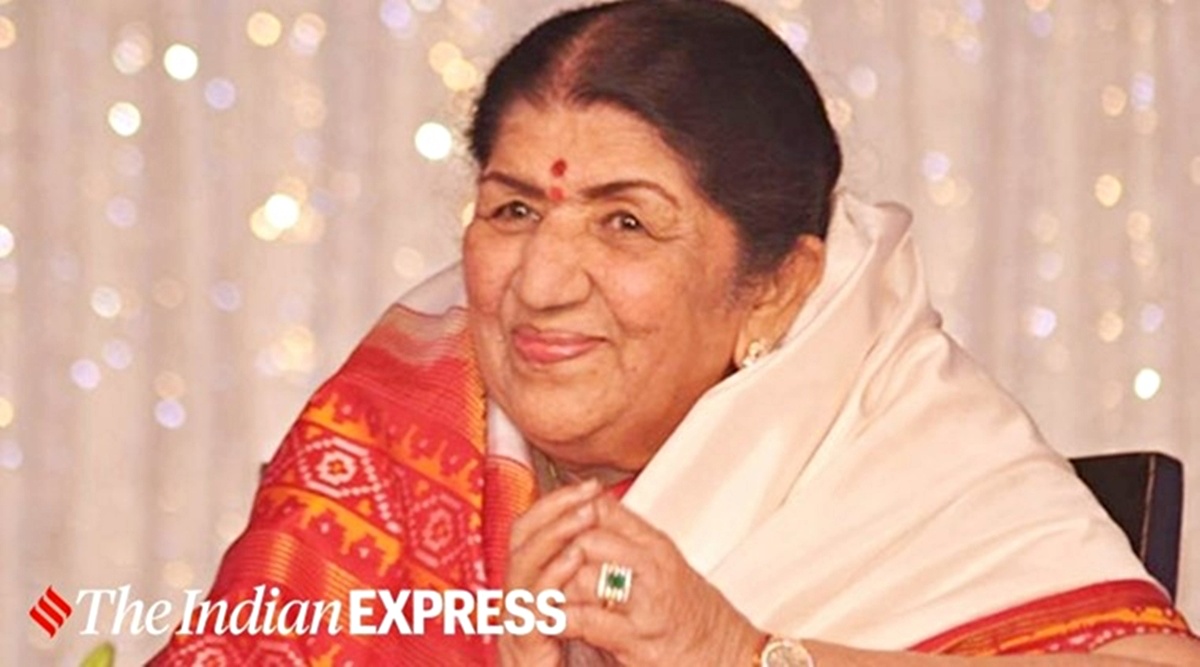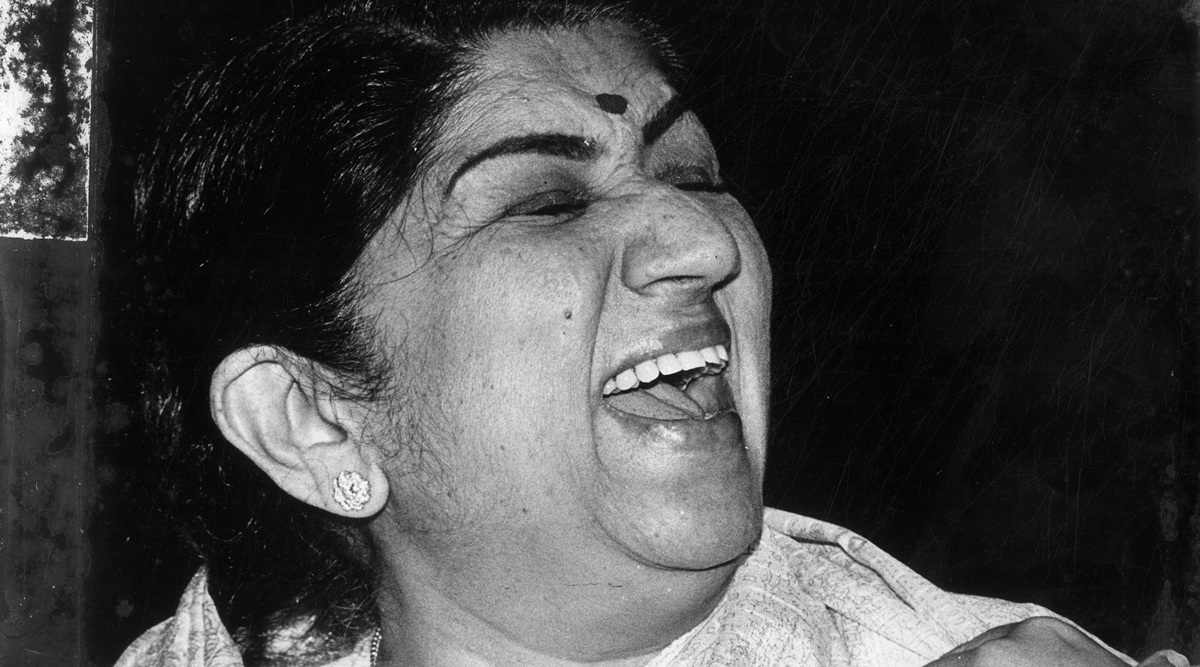 During her lifetime, Lata Mangeshkar earned many titles. The highest among them was the Bharat Ratna.
During her lifetime, Lata Mangeshkar earned many titles. The highest among them was the Bharat Ratna. For more than seven decades now, the name Lata Mangeshkar has been synonymous with extraordinary talent and artistic excellence. Even though she slowed down about two decades ago, after a highly successful and prolific career, few Indian artistes can dream of ever matching her achievements, star power, or mass appeal. Such is her impact on Indian music that Mangeshkar can not only be unequivocally called an exceptional vocalist but also one of the greatest Indians of all time.
The 1929-born singer was around 20 years old when she swung into popular consciousness in 1949 with the outstanding success of “Aayega Aanewala” in Mahal. However, at the time, there was an unfair practice of characters in the movies, on whom a song was picturised, to be credited for songs instead of the original playback singer. In this case, it was Madhubala’s character in Mahal, named Kamini. The song created a frenzy and All India Radio (AIR) was flooded with calls to know the singer’s name.
Mangeshkar was unstoppable after that. After doing a few roles in Marathi films, she had taken up playback singing to financially support her family following her father’s death. However, once she shot to nationwide fame, she went on to dominate playback singing in India for the next 50 years with her mellifluous voice, unique talent, hard work, and some well-thought-out career moves.
When Mangeshkar entered the scene in the late ’40s, the film industry was finding its stability after World War II and India’s independence. Filmmaking was making impressive strides in terms of creativity and innovations. She came to represent “the spirit of new India” with goosebumps-inducing songs such as “Allah Tero Naam in Hum Dono” (1961), which celebrates India’s secularism, and the landmark “Ae Mere Watan Ke Logo” which was first performed on Republic Day in 1963, in memory of the Indian soldiers who died during the 1962 India-China War.
Mangeshkar’s voice carried a universal appeal that touched the soul as well as reflected her technical brilliance. But, she never took her art for granted. Known to be extremely hardworking, she learnt Urdu to improve her pronunciation and understanding of the language. She was as careful about choosing the songs as she was about her persona. She refused to sing anything that sounded inappropriate. Her public appearances were non-glamorous as she was mostly seen in off-white saris with her hair tied in a long plait — at times, two plaits.
It can’t be a mere coincidence that in the ’70s when she sang a bhajan of singer-saint Mirabai, there was a slogan that gained currency: “Lata is Meera. Meera is Lata” (mentioned in Neepa Majumdar’s book Wanted Cultured Ladies Only!: Female Stardom and Cinema in India, 1930s to 1950s, published by University of Illinois Press: Urbana and Chicago, 2009). This contributed to her image of being “pure” and she emerged as almost a reverential figure. What added to Mangeshkar’s aura is the fact that she was unfailingly humble during her public appearances – often calling her voice to be “god’s gift” and her success to be her parents’ “blessings”.
During her lifetime, Mangeshkar earned many titles. The highest among them was the Bharat Ratna, which was conferred on her in 2001. Though the award was instituted in 1954, she is one of the only five women, and the last one, to receive the title. Other prominent honours include Dadasaheb Phalke Award, India’s highest award in cinema. That apart, there are multiple sobriquets attributed to her including ‘Nightingale of India’ that asserts her stature as a prominent artiste of the nation. Then, of course, there are informal ones such as ‘Melody Queen’, ‘Maharani’ and ‘High Command’ – the latter two are mainly jibes taken at the power she wielded in the industry (writes Raju Bharatan in his book Lata Mangeshkar: A Biography, UBS Publishers; 1995). She was also fondly called Latabai and Didi.
 Lata Mangeshkar’s voice carried a universal appeal that touched the soul as well as reflected her technical brilliance.
Lata Mangeshkar’s voice carried a universal appeal that touched the soul as well as reflected her technical brilliance. In spite of her stronghold in the industry, it was not always smooth sailing for Mangeshkar. She had many detractors and several fallouts with industry biggies. However, every disagreement was pushed aside eventually and she was wooed by the filmmakers. Having her in the movie often meant commercial success and enduring music. After the commercial debacle of Mera Naam Joker (1970), Raj Kapoor was in debt. He desperately needed the songstress, who had then refused to work with him anymore, to come on board for his next directorial outing Bobby (1973). Once she was placated, unsurprisingly, Mangeshkar proved to be the perfect voice for the 16-year-old Dimple Kapadia with Bobby’s songs “Jhoot bole kauva kate” and “Ankhiyon ko rehne de ankhiyon” capturing her titular character’s energy, youthfulness, and heartbreak.
In fact, with her mellifluous and magical voice, Mangeshkar had always been the go-to singer for young actors to convey diverse emotions. She was the voice for Madhubala as she defied the diktat of an emperor with “Jab pyar kiya to darna kya” in Mughal-E-Azam (1960), and in Bandini (1963), Nutan lip-synched to “Mora gora ang laile” as her character experienced the first flush of love. She gave voice to Sridevi’s mischief in “Mere hathon mein nau nau chudiyan” in Chandni (1989); separation pangs of Bhagyashree with “Dil deewana bin sajna ke” in Maine Pyar Kiya (1989), Madhuri Dixit’s vivacity in “Maye ni maye” in Hum Aapke Hain Kaun…! (1994), and Kajol’s daydreaming in “Mere khwabon mein jo aaye” in Dilwale Dulhania Le Jayenge (1995). She not only ensured hit movies with successful albums, but she remained a star-maker too.
Credited for her sharp business sense and warding off competitors, Mangeshkar was ahead of her contemporaries in claiming her due. She asked for royalty while Mohammed Rafi disagreed. Lata believed that being the two top singers of their time, they should put their might to ensure the singer’s share of two-and-a-half per cent royalty. Rafi believed his financial claim on the song ended once he recorded it. This is something that his family would regret later. She bruised Dilip Kumar’s ego when they recorded the song “Laagi naahein chute” that was composed by Salil Chowdhury in the movie Musafir (1957). It was reported that Kumar picked Raag Piloo for this song and practised it for long hours on the sitar. But, Mangeshkar, as expected, overshadowed him and the actor sulked for years. This was resolved in 1970 when she tied Kumar a raakhi, who always referred to her as “younger sister”. The photo of two stalwarts was splashed in a magazine and was hailed as a reminder of Hindu-Muslim unity in India.
 Dilip Kumar always referred to Lata Mangeshkar as “younger sister” (Photo: Express Archive)
Dilip Kumar always referred to Lata Mangeshkar as “younger sister” (Photo: Express Archive) For Indians, Mangeshkar is an emotion, a deeply overwhelming one. Her voice and incredible body of work remain incomparable. She is also that rare female icon whose appeal transcends different generations, geographical and language barriers. There can’t be another artiste like her. Lata Mangeshkar lives on.
- The Indian Express website has been rated GREEN for its credibility and trustworthiness by Newsguard, a global service that rates news sources for their journalistic standards.

